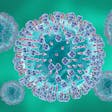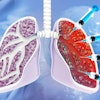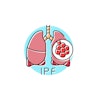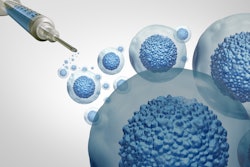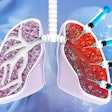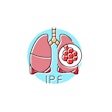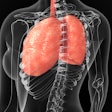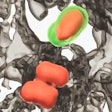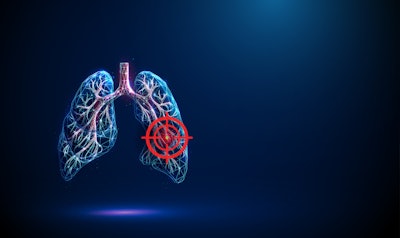
Scientists at Scripps Research and aTyr Pharma have discovered a protein that could provide relief for patients suffering from pulmonary sarcoidosis. The paper, “A Human Histidyl-tRNA Synthetase Splice Variant Therapeutic Targets NRP2 to Resolve Lung Inflammation and Fibrosis,” was published in Science Translational Medicine.
Pulmonary sarcoidosis has the highest inflammation of the interstitial lung diseases (ILDs) and affects approximately 200,000 U.S. patients each year. The cause of the condition remains unknown, and new treatments have not been introduced in the past 70 years.
Researchers believe the mild protein, HARSWHEP, can break up inflammation, reduce scarring and slow disease progression by regulating white blood cells. Efzofitimod, a therapeutic form of HARSWHEP, demonstrated promising results in a phase 1b/2a clinical trial.
“It’s not a hammer; it’s not overly suppressing the immune system. It’s just nudging the immune system in a certain way. And if you can quiet the inflammation, you can stop the cycle of ongoing fibrosis,” said first author Leslie A. Nangle, PhD, vice president of research at aTyr Pharma, in a press release.
HARSWHEP is part of an ancient class of proteins known as aminoacyl-tRNA synthetases (aaRSs), which play a key role in protein synthesis. According to Dr. Nangle, they occur in every cell of every organism on Earth. Over time, new versions have emerged, called splice variants, that bind to receptors on the outside of cells and initiate different events throughout the body.
The team of researchers screened more than 4,500 receptors and found that HARSWHEP will only bind to neuropilin-2 (NRP2) — a receptor involved in the development of the lymphatic system. When monocytes enter a tissue in response to inflammation and develop into macrophages, the cells start to express high levels of NRP2.
To characterize the protein’s mechanism of action, Dr. Nangle and team administered the protein in mice and rats. When HARSWHEP was introduced to bind to NRP2, the macrophages transformed to become less inflammatory and helped reduce existing inflammation and slow further fibrosis.
 Leslie A. Nangle, PhDaTyr Pharma
Leslie A. Nangle, PhDaTyr Pharma
The research group also categorized patients’ circulating immune cells before and after treatment with efzofitimod, a first-in-class biologic immunomodulator. It observed a reduction in key indicators of the inflammation that drives sarcoidosis, such as the concentration of macrophages and other inflammatory immune cells.
The work highlights macrophages as a possible therapeutic target for pulmonary sarcoidosis as well as other ILDs, and the results using HARSWHEP could determine the potential of other aaRSs.
According to senior author Paul Schimmel, PhD, the positive phase 1b/2a efzofitimod clinical trial results “validate a new way to approach immune regulation in chronic lung disease.” Dr. Schimmel is professor of molecular medicine and chemistry at Scripps Research and has spent his career working on aaRSs. Dr. Nangle is a former graduate student in Dr. Schimmel’s lab.
The scientists reviewed separately published clinical trial data and observed positive outcomes for patients who took efzofitimod while tapering off oral corticosteroids. Long-term steroids, which are the current first-line treatment option for pulmonary sarcoidosis, are known to be associated with significant weight gain and organ damage, and the immunosuppressive effects can often make patients susceptible to infection.
“Original work that happened at Scripps gave rise to the idea that this could be a new class of therapeutic molecules,” said Dr. Nangle. “We have now moved it all the way to clinical development. It’s a proof of concept for this whole class of molecules and the work [Schimmel] has done.”

